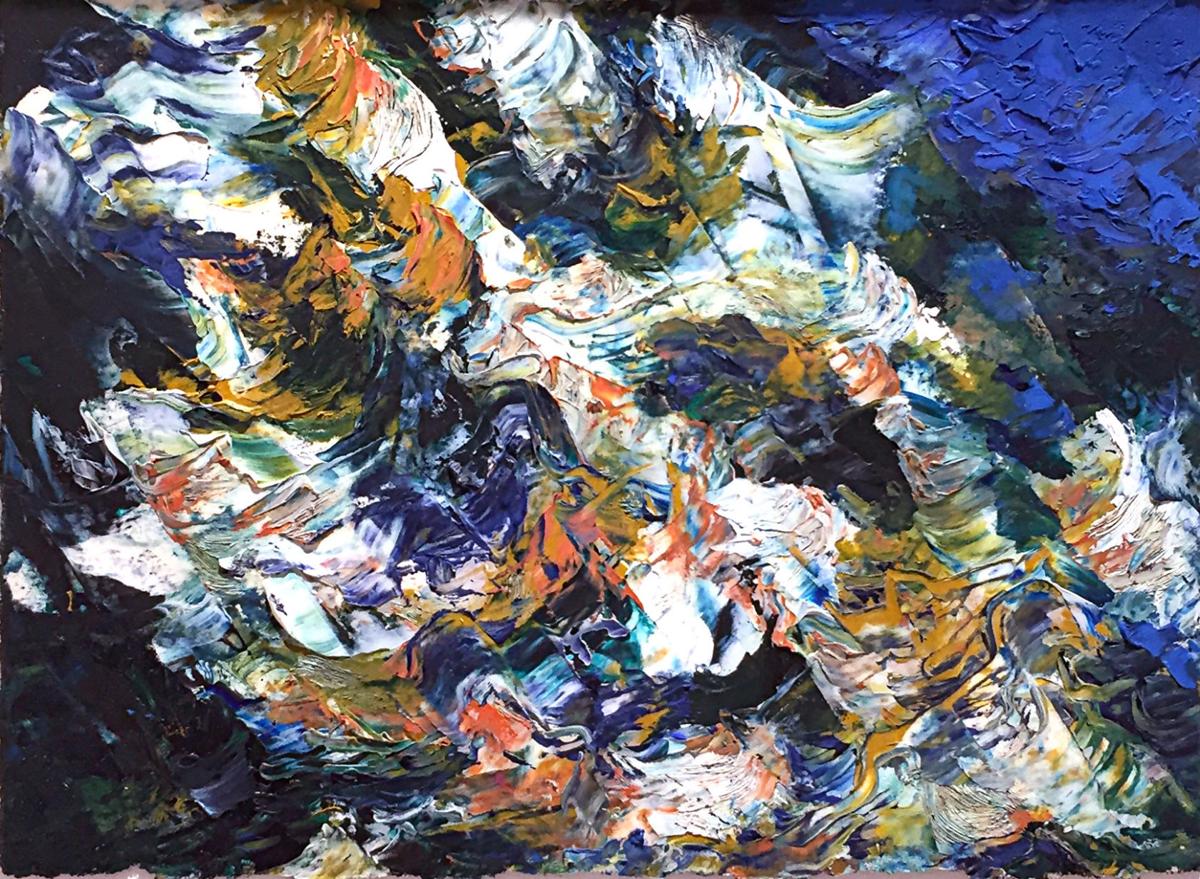“Marcando el Relámpago” fuses the art of Tina Fuentes, Professor of Art at Texas Tech University, with the work of Eric Bruning, Texas Tech Atmospheric Sciences professor.
Fuentes’ images interpret the sensory component in patterns of atmospheric electricity, lightning, cloud physics and dynamics in this collaborative visual dialogue. While interpretations are seen in the paintings and drawings of Fuentes, weather photographs by Bruning provide the observational side of works that express “marking the lightning.”
Atmospheric studies have included electrification’s dependence on cloud microphysical conditions, including the impact of environmental thermodynamics and entrainment, the distribution of flash sizes and electrical energy, and the role of turbulent kinematic trajectories in organizing the texture of charge within the cloud. Using art as a visual language, it all makes sense.
Bruning’s research into the turbulent character of lightning is underlined with documentary photographs. In his world, scientific observations have determined its complex nature, for it has been determined that by the time one lightning strike reaches the ground, five may have taken place overhead, but are hidden by a cloud.
Fuentes shows several cloud paintings that capture the character of skies partially concealing the electrification in their vicinity. The contrast between the documentary form of Bruning’s photographs and Fuentes expressive paintings is matched by the extreme contrasts in the art works themselves. Large and small monochromatic paintings and drawings evoke the feelings of depression and even doom in unrelenting storms, while smaller, but chromatically brighter paintings suggest the promise of a brighter day, although maybe not right away. One such cloud painting is “Nube Colorado Turbulenta l,”an explosive mix of blacks, whites, reds and yellows that shows several lightning flashes.
Interest in deconstructing everyday objects is also an important part of the artist’s work. Fuentes describes her work as “non-objective or abstract,” and also as “biographies and self-portraits” as she sees her art as revealing who she is and how she has developed and grown as a person.
The cloud paintings become deconstructions in her expressive attempt to take apart and understand the transient phenomena of her subject. Informed by the energy of atmospheric activity, these abstracted allegories sometimes represent both physical and emotional sensations that are encountered as the clouds and lightning of thunderstorms are observed. The short choppy strokes in “Nubita Azul” may allude to the short lightning paths and choppy gusts of wind in turbulent clouds documented by science. The white flash through the center of “Marcando el Relámpago l” creates uneven edges of storm clouds and flashes of bright color as we seem to be looking up right into the action. Fuentes captures the gestural qualities of clouds and the rapid and slow movement of lightning moving through them as she transports us high above the surface of the earth.
Bruning uses observations of the atmosphere to study how thunderstorm meteorological processes influence the development of lightning, and although this may not seem to correlate comfortably with the art world, Fuentes demonstrates that it can.
“This collaboration between artist and scientist reminds us that all the disciplines are interconnected,” said Gina Otvos, South Texas College Library Art Gallery Associate. “I am excited to work with our science library liaison and faculty to see what kind of collaborations we can come up with here at STC.”
Nancy Moyer, Professor Emerita of Art at the University of Texas Rio Grande Valley, is an art critic for The Monitor. She may be reached at nmoyer@rgv.rr.com.
Source: Science connects with drawings and paintings in this South Texas College exhibit













